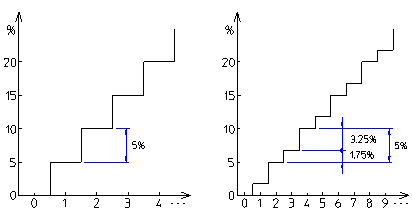about us ELMEC

ELMEC Technology of America, Inc.is the OEM Sales Office of ELMEC Corporation selling ELMEC's superior high-speed delay lines to the world. A privately held company established in 1981, ELMEC is headquartered in Kawasaki, Japan, with 24x7 manufacturing facilities in Matsue, Japan. ELMEC holds 39 patents in Japan and 24 patents in the U.S. for its innovative delay line technology.
ELMEC Technology of America, Inc. handles direct sales of the ELMEC product line through El Monte-California based sales offices and warehouses. The market leader for delay line products in Japan, today we're rapidly gaining market share in North America, Europe, Middle East and Asia as we continue to add satisfied clients to our customer base.
Click here to contact us with your questions or comments.
delay lines from ELMEC
1. Super High-Speed, High-Density Delay Lines
With distributed constant or lumped constant structures, ELMEC’s delay line components have a super high-speed, high-density design achieved through our unique development process to make the most of your logic applications.
The distributed constant types; the SIP FDC type and the SMD CDA type are made using a unique micro strip pattern for an extremely dense formation with super high-speed. The lumped constant types; the SIP FDC and FDD types and SMD CDA type have an extremely compact form while housing high-density components. The FDC and FDD types have a 15 section structure (this is normally a 5 section structure for other companies) so even with the same delay time, the cutoff frequency is high. This makes it possible to pass very high-speed signals.
2. High-Resolution Variable Mechanisms
ELMEC has succeeded in developing high-resolution variable mechanisms that can obtain resolutions higher than those previously available.
VDA and VDS type high-speed variable delay lines have been designed for superior performance.The VDS type houses a 20 section delay component. This allows 20 step variability with each step be a 5% increment. The VDS has over 40 mechanical stability step points, and is designed to obtain delay time changes at a finer level than 5% demonstrating the capabilities of these high-resolution variable mechanisms.
We were able to achieve an irregular 40 step variability achieved by combining the qualities of delay line components with a variable mechanism. With 40 step variability you would expect the rate of change to be 2.5%/step. However, the function is irregular so although 2 steps are equal to 5%, it is possible to alternately obtain changes which divide those intervals to a ratio of approximately 3.5:6.5; which are changes of approximately 1.75% and 3.25% (See below). With the VDA type, a division ratio of 2:8 is obtained with 15 sections and 30 steps. When one observes the waveforms of the delay time changes by moving the adjustment knob, at first the changes appear unusual, but with actual operation there is no problem and the design is efficient.

Printable Version - High Resolution PDF
3. High-Stability Variable Mechanisms
The output waveform does not cut out during movement of the adjustment knobs for VDA, VDJ, VDK, and VDS types. This makes waveform observation during adjustment possible.
The guaranteed life of contact switches is 100 full movements; from side to side. The majority of use involves a switching frequency of 10 times or less. Therefore ten times the average usage should be more than sufficient for most customers. This number does not mean that reliability is low, but rather that the variable mechanism is extremely stable under vibration and shock. It also withstands environmental conditions and changes over time.